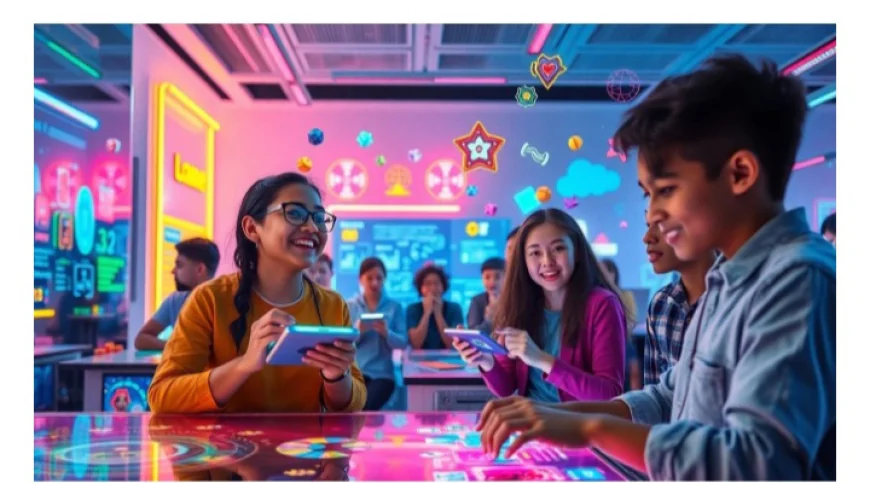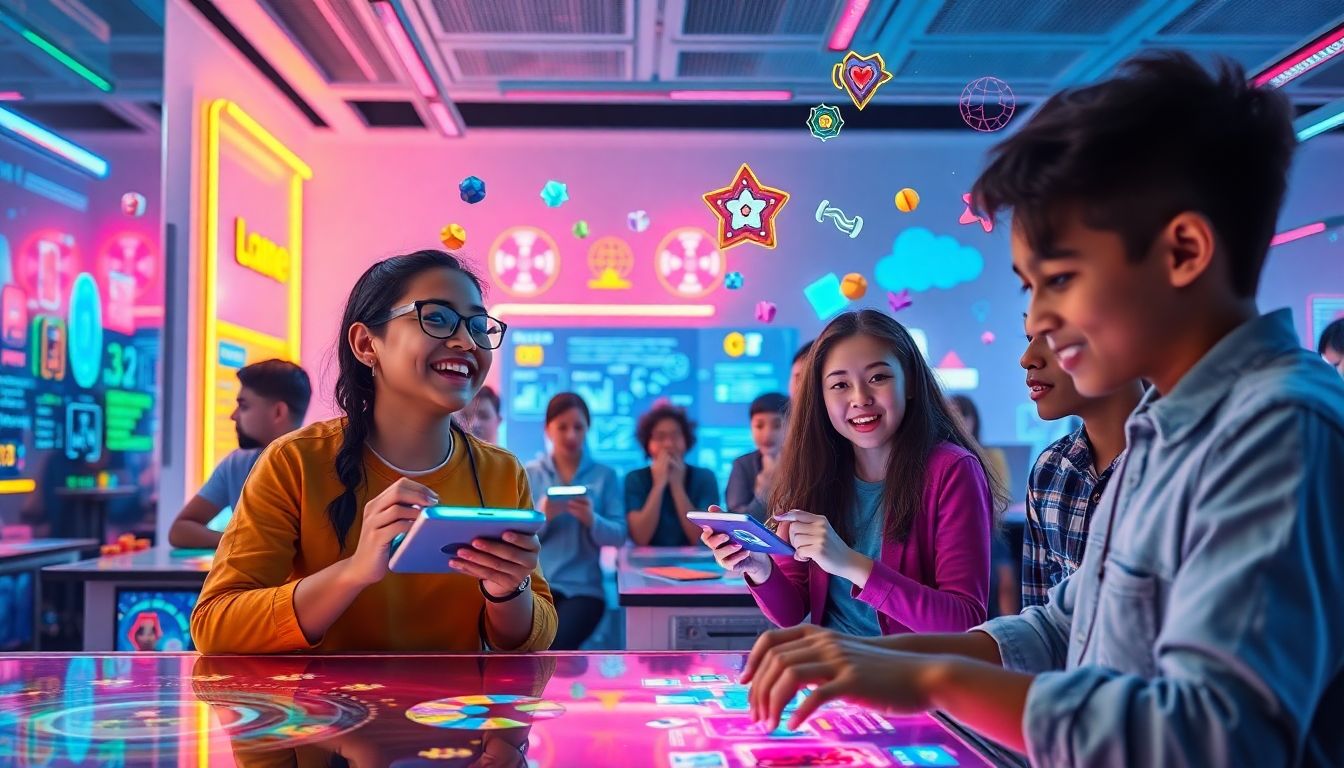Gamifying Knowledge: How to Make Learning Feel Like Play
In recent years, gamification has taken the education and business worlds by storm. More schools and companies are turning to game-like elements to make learning fun and engaging. Why? Because traditional methods often leave students bored and motivation declines. When learning feels like play, people focus more, remember more, and have a harder time quitting. This article explores how you can turn learning into a game. You'll discover the key principles, best practices, tools, and real-life examples that show how gamifying knowledge can boost motivation and results. Ready to level up your approach to teaching and training? Let's dive into making learning fun!


Gamifying Knowledge: How to Make Learning Feel Like Play
Introduction
In recent years, gamification has taken the education and business worlds by storm. More schools and companies are turning to game-like elements to make learning fun and engaging. Why? Because traditional methods often leave students bored and motivation declines. When learning feels like play, people focus more, remember more, and have a harder time quitting.
This article explores how you can turn learning into a game. You'll discover the key principles, best practices, tools, and real-life examples that show how gamifying knowledge can boost motivation and results. Ready to level up your approach to teaching and training? Let's dive into making learning fun!
Understanding Gamification in Learning
What is Gamification?
Gamification is the process of adding game elements to non-game activities. In education, it means using points, badges, and leaderboards to encourage learners. Unlike game-based learning, which uses entire games, gamification adds game-quality touches to lessons or training. This helps make even dry material more exciting.
Why bother? Because learners who find the process engaging tend to stay involved longer. They also end up learning more because they are fully invested. That's why gamifying knowledge can change how people absorb information.
The Science Behind Gamification
Cognitive science shows that people learn better when they’re motivated. Certain parts of our brain light up when we’re rewarded or challenged. Studies confirm that learners in gamified settings retain about 9% more information.
Psychologists say motivation works in two main ways: intrinsic (doing it because you enjoy it) and extrinsic (doing it for rewards). Applying both types of motivation in gamification helps keep learners excited and committed. For example, earning badges taps into our desire to achieve, while stories keep us emotionally involved.
Key Elements of Gamified Learning
Here are some core pieces of a good gamified experience:
- Points, Badges, Leaderboards: These reward achievements and foster friendly competition.
- Challenges and Quests: Tasks that push learners to solve problems or complete goals.
- Feedback Loops: Instant responses to actions that guide and motivate.
- Storytelling and Narrative: Using a story to make challenges feel like part of a bigger adventure.
These elements work together to create a rich, motivating learning environment.
Designing Effective Gamified Learning Experiences
Setting Clear Objectives and Outcomes
Before creating a game-like course, ask: what should learners really get out of it? Align game features with specific goals—like mastering a new skill or understanding a concept. Define what success looks like with measurable indicators. For example, a quiz score or completed challenge.
Clear goals help learners see why they’re playing—and what they need to accomplish. It also guides you in selecting relevant game mechanics.
Choosing Suitable Game Mechanics
Pick game features that match your learning goals. Use challenges to test skills, rewards to motivate effort, and competitions to encourage teamwork. Balance extrinsic motivators like points with intrinsic ones like personal growth.
Make sure your game mechanics are accessible for everyone. Avoid overly complicated rules that might discourage participation. Think inclusively so all learners can enjoy the experience.
Integrating Narrative and Storytelling
A good story pulls learners in. For instance, framing a lesson as a mystery to solve or a quest to save a town makes content memorable. Some successful courses use characters and worlds to create immersive scenarios.
Tips for storytelling: keep it simple, relatable, and engaging. Use scenarios that mirror real life or exciting adventures with a purpose. This turns boring info into adventure-filled pursuits.
Leveraging Technology and Tools
Many platforms support gamified learning. For example, Kahoot! makes quizzes fun, while Duolingo turns language practice into a game. Virtual reality and simulations can make lessons even more immersive.
Utilize software that tracks progress and gathers data. Analyzing this helps you improve your design and see what’s working best.
Best Practices and Actionable Tips for Gamifying Knowledge
Personalization and Adaptive Learning
Every learner is different. Offer challenges that fit their skill level, gradually increasing difficulty. Use adaptive tech that adjusts based on how well someone is doing. This keeps tasks challenging but not frustrating.
Encouraging Collaboration and Social Learning
Make learning social by adding multiplayer elements. Group activities and friendly competitions boost motivation. Creating online communities where students share achievements makes learning more personal.
Providing Constructive Feedback and Rewards
Immediate feedback guides learners to improve. Rewards should be meaningful, like virtual badges or recognition. Celebrate progress to keep motivation high.
Monitoring and Evaluating Effectiveness
Track how learners engage and perform. Use this data to tweak your approach. Continually improve your gamified system to ensure it remains fun and effective.
Real-World Examples of Gamified Learning Success
- Duolingo: Language learners earn points and badges, making daily practice addictive.
- Khan Academy: Students unlock badges and see progress bars, turning lessons into milestones.
- McDonald’s “The App School”: Employees complete gamified modules to learn new skills with rewards and leaderboards.
These examples prove that well-designed gamification boosts engagement and results across various fields.
Challenges and Considerations in Gamification
While many benefits exist, there are pitfalls. Overdoing it can make learning seem like just a competition or distraction. Striking the right balance is key.
Other issues include accessibility—ensuring everyone can participate—and privacy concerns when collecting data. Be transparent with users about how their info is used. Keep the fun aligned with educational goals to avoid trivializing content.
Conclusion
Gamifying knowledge offers a powerful way to transform education and training. When designed properly, it can motivate learners, boost retention, and make learning a fun activity. Clear goals, storytelling, effective tools, and regular evaluations are the ingredients for success.
Remember, the goal isn’t just to entertain but to create an environment where learning feels like play. Embrace this approach, and you'll turn passive learners into active, lifelong ones. The future of education is interactive, engaging, and full of possibilities. Start implementing these strategies today, and watch motivation soar!



 VARSHITHA
VARSHITHA